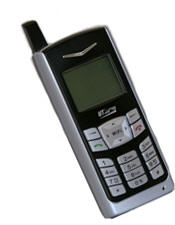Calling 911 over your Vonage Wi-Fi handset? Better know your exact location


On Tuesday, December 13, Vonage made available the UTStarcom F1000 WiFi handset. Costs $79.99 after an automatic $50 rebate. Works like a charm in all public WiFi hotspot coverage areas.
OK, fair enough.
Then, on Wednesday, December 14, Vonage announced that it now offers E911 or enhanced 911 throughout the US, by sending the call, along with the customer’s address and phone number, to the proper local emergency call center based on the caller’s street address. The caller’s information is then displayed on the dispatcher’s screen whenever they dial the digits 9-1-1 from a Vonage phone.
But let me tell you how my mind works. I sometimes like to look for commonality in seemingly unrelated things. As a result of this admittedly sideways thinking, I then started to ponder, OK, well, what if a Vonage WiFi Phone user finds himself/herself in range of a public Wi-Fi hotspot, and then needs to call 9-1-1?
I checked with Vonage spokesperson Mitchell Slepian, who wrote back to me:
The call center sees the address you have as your 911 address, then once they speak to you can route based on that address or on another you may give verbally, this is why we are using the call center for WiFi due to the high likelihood you are using the phone in a different location. WiFi is mobile so we don't want to assume your location.
Yea, but what if that caller can't "speak?" What if they feel faint and they don't happen to know the address of where they are calling from? Or they witness a crime in progress? Or what about a fire? Or if they see a plane crash, such as yesterday's terrible accident just off Miami Beach? What jurisdiction should respond?
I'll keep repeating this 'til I am blue in the face, but until VoIP-enabled mobile devices and notebooks all have built-in GPS functionality mappable to a national database that can tie geographical coordinates to emergency responder jurisdictional boundaries - and then route those calls instantaneously - any other "provisioning" technology is a workaround.